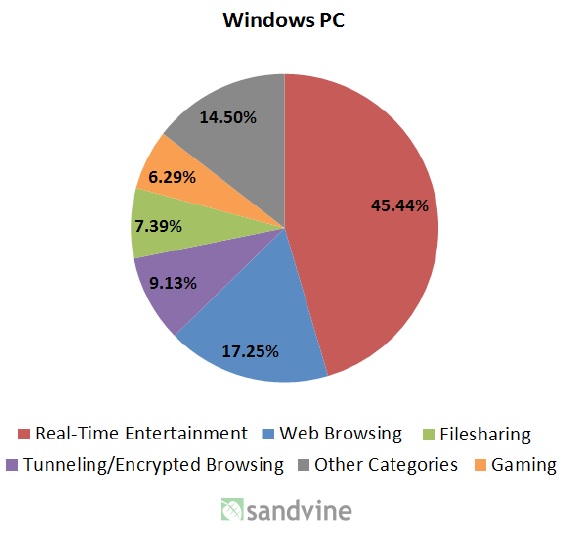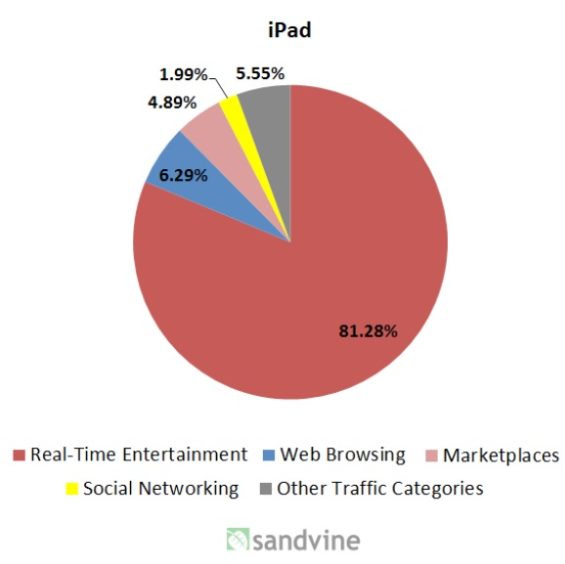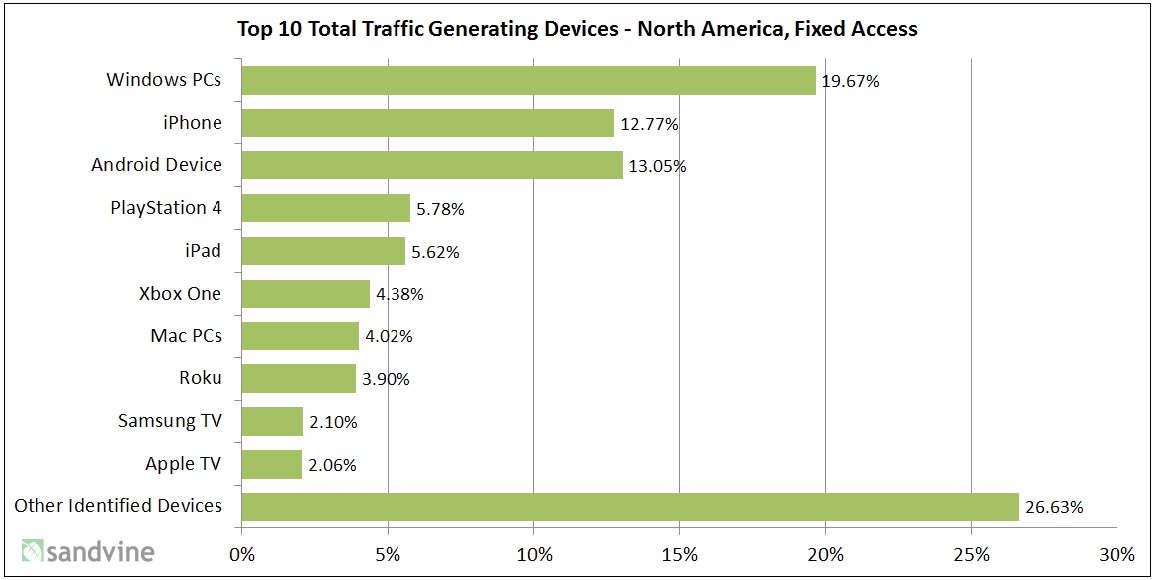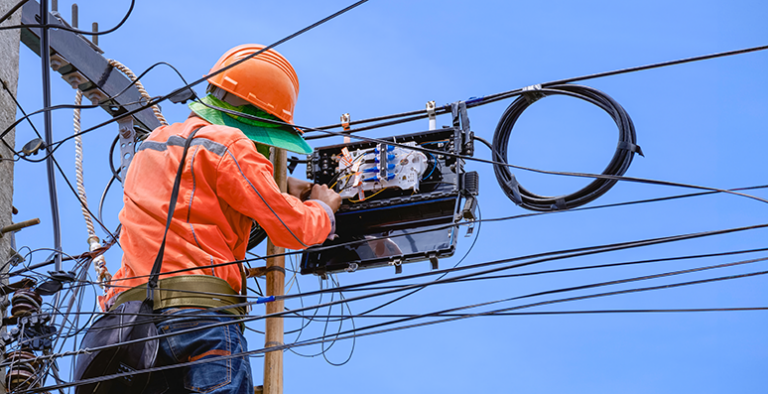If you live in the average internet household in North America, you likely have multiple connected devices at your fingertips, which you use for a variety of purposes when going online. A new report released by Sandvinegives us a glimpse into our internet usages and patterns inside the home, and how they might differ based on the device we are using.
The 2016 Global Internet Phenomena: Inside the Connected Home report found that North American households on average have seven internet connected devices, with the Windows PC (above mobile devices, game consoles, set-top boxes and SmartTVs) individually generating the most web traffic in homes, at over 19 percent.
However, when traffic for mobile devices including Android, iPhone, and iPad were compiled together, they accounted for more than 30 percent of traffic in homes across the continent. Though we usually equate mobile devices as ones we use on the go, these figures suggest we are relying on our phones and tablets more while we are inside our homes. For comparison purposes, Sandvine reported that five years ago, this type of “home roaming” only accounted for nine percent of traffic.
The stats below are a combination of downstream and upstream traffic for a fixed home network:
So what are people doing once they are connected? The report also broke down the categories of internet usage generated for the following devices found inside the home: Windows PC, Android, iPad, Playstation 4, and Roku. “Real-time entertainment,” or in other words, video and audio streaming, was the dominant category for each device over web browsing, tunneling/encrypted browsing, social networking, marketplaces (used to download and update apps), and gaming.
In Windows PC and Android it accounted for 45 percent and 62 percent of traffic, respectively, and an even greater share on iPad, where it took up 81 percent of traffic. It’s interesting to see that as a tablet screen gets larger, streaming consumption also goes up. A surprising finding came with Playstation 4, as Sandvine revealed that 65 percent of traffic went to video streaming, 25 percent to game purchases, free demos and software updates, and nearly 3 percent to game play. Set-top boxes and SmartTVs generated the largest share of real-time entertainment at 95 percent, as their primary function is to connect to a television and stream video.


As each year goes by, we see more and more digital devices enter the home, with each adding new value to how we connect and use the internet. These traffic patterns tell us how the devices we turn to affect the amount of internet consumption in our homes and offer a peek into how real-time entertainment, or video streaming, will continue in the coming years.










